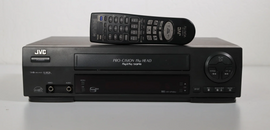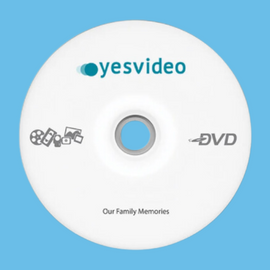
In the digital age, it's easier than ever to capture and store our memories. We take photos and videos on our smartphones and digital cameras, and then store them on our computers, external hard drives, or in the cloud. Many people still use CDs and DVDs for preserving their precious home movies and photos, but this option is not to be trusted.
CDs and DVDs are not reliable for storing your precious memories. They are prone to damage and deterioration, and can become unreadable over time. This can lead to the loss of all your precious photos and videos, and the memories they hold. These plastic discs were popular for years, but it's now time to transfer their contents to a more durable solution.
One of the biggest problems with CDs and DVDs is that they are susceptible to physical damage. Scratches can cause them to skip or become unreadable, and even minor damage can cause data loss. Once a CD or DVD is cracked, it cannot be repaired. The only option is to replace it, and if you have not made a backup, your memories may be lost forever.
Another problem with CDs and DVDs is that they have a limited lifespan. Over time, the materials used to manufacture CDs and DVDs can deteriorate, causing them to become unreadable. The lifespan of a CD or DVD can vary, but on average, it's estimated to be anywhere from 5 to 15 years. This is not the proper medium for storing memories dating back many decades.
In addition, CDs and DVDs are not a convenient option for accessing your memories. They are not easily searchable, and you have to physically handle them to view the contents. This can be time-consuming and frustrating, especially if you have a large collection of discs. Additionally, not all devices support CD and DVD playback, so you may need to purchase additional hardware just to access your memories.
Another issue with CDs and DVDs is compatibility. Different brands of discs may use different formats, and not all devices support all formats. This portability issue causes problems when trying to view or transfer your memories from one device to another. Furthermore, many older CD and DVD players may not be compatible with newer discs, meaning that you may lose future access to your memories.
Since the late 1980s, consumers started paying to transfer their exposed photographic film onto picture CDs. Kodak, Walgreens, CVS, Walmart, and Costco produced billions of these plastic discs, each containing easily exportable JPEG photos. Starting in the 1990s, video digitizing companies like YesVideo, Legacybox, and iMemories began converting home movies from 8mm film reels and VHS cassette tapes onto more convenient DVDs. However, these picture CDs and movie DVDs cannot be trusted to keep your memories safe.
The best option is to convert your home movies and photos to a portable digital format. For video, this is the wildly popular MP4 format. This will give you the peace of mind that your memories are accessible from any digital device. Once your memories are in a portable digital format, you can easily store them on your computer & in the cloud, which is much more reliable than CDs and DVDs.
When converting your memories to a digital format, it's important to choose a digitizing company you can trust. This will ensure that your photos and videos are handled with care, and that the conversion process is carried out correctly. Research the company's reputation and read recent Google reviews, not just what's listed on the company's website.
It's also important to store your digital files in a durable way. Memory cards and external hard drives are popular, but they can also become corrupted or crash. Your home computer is also suspectible to crashing, or worse, destruction in a natural disaster. Good news, the data redundancy of cloud strorage helps you preserve your files with 99.999999999% durability.
Finally, it's essential to keep your digital files organized. This will make it easier to find the files you need, and to share your memories with others. You can use file naming conventions, create folders, and use photo and video editing software to add metadata to your files. It's incredibly tedious to organize your files this way when they're stuck on multiple CDs and DVDs.
Please don't trust your home movies and photos to CDs or DVDs. They are prone to damage and deterioration, have a limited lifespan, and are not a convenient option for accessing your memories. The best option is to convert your memories to digital format, and store them on the cloud. With these steps, you can be confident that your memories will be safe and enjoyable, for life.

